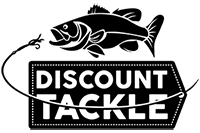
Talkin' Tackle Tech: Daiwa Product Technologies Explained
By Owen Gartner
Major fishing tackle manufacturers like Daiwa spend millions of dollars on research and development every year as they try to stay on up top of creating the latest and greatest in fishing tackle innovation! When they perfect a new manufacturing technique or feature, they often give it a buzzworthy name, create a spread of eye-catching graphics, and plaster the web with ad spots promoting this new feature and the products that it has been integrated into. But after all that's said and done, the average angler may be still be left reasonably wondering "wait, how is this going to help ME as an angler, catch more fish? Is this fancy new equipment designed to catch the fish, or catch me?"
That's why we've decided to start our new blog series: Talkin' Tackle Tech. In this series, we break down fishing tackle technologies and manufacturing techniques from major brands, starting with Daiwa, so you as an angler can determine if, and how, these products can help you improve your fishing and not just a corporation's bottom line.
Reel Tech
T-Wing System (TWS)
One of the most commonly found technologies on Daiwa baitcasting fishing reels is their T-Wing System (TWS) levelwind technology. A levelwind's primary function is exactly what its name implies: ensure that your fishing line wraps around the spool in an even and level fashion. Beyond just looking cleaner, this prevents backlash, promotes consistent reel performance, and extends the life of your line.
What's unique about Daiwa’s revolutionary T-Wing System is that it addresses one drawback of traditional line guide/levelwind systems. Specifically, Daiwa's TWS doesn't constrict line flow like other levelwinds because it uses a T-shaped line guide that is larger, wider, and less restrictive. TWS allows line to exit freely from the spool with minimal line angle and minimal friction, which in turn reduces line noise and backlash, and delivers more accurate and longer casts.
SV Boost
Daiwa's SV Booster System (or SV Boost) is one of the newest Daiwa technologies to be released on the North American market and for now is exclusively found in the new Zillion SV TW G Baitcasting Reels. SV Boost is a specialized braking and cast control system that simultaneously reduces backlash potential and improves overall casting distance.
SV Boost builds off of the SV Concept Spool found in previous generations of the Zillion, the current Tatula casting reel line-up, other high-performance Daiwa casting reels. Instead of a static or 1-stage braking system found in previous reels, SV Boost uses a 2-stage braking system that applies tension to the spool a key points at the beginning and end of the spools rotational cycle. This makes sure the system only applies the minimal amount of brake force to prevent backlash, which along with the super lightweight yet rigid SV Concept G1 Duralumin spool, maximizes cast potential by up to 15% compared to previous iterations.
DigiGear
DigiGear technology consists of digitally cut brass reel gears found in almost all modern Daiwa reels. By leveraging the accuracy of computer-guided gear machining, Daiwa DigiGears maximize surface area that the gears have to come in contact with each other. This produces smoother gear mesh and improves overall reel performance.
DigiGear also reduces gear noise and helps the user feel more connected to the reel and have greater overall control of their retrieve.
Automatic Tournament Drag (ATD)
Automatic Tournament Drag (ATD) is a high-performance drag technology mostly found on Daiwa's high-end spinning and conventional reels, like the Saltiga Conventional Reels, the Certate LT Spinning Reels, and Procyon AL LT Spinning Reels.
Daiwa’s Automatic Tournament Drag uses a refined drag grease that has low viscosity at rest, yet becomes more viscous immediately after drag start-up. This reduces initial drag start-up inertia, and when combined with the structural changes of the ATD Drag System, result in a smoother drag from the initial hook up to the time the fish reaches the boat.
Rod Tech
X45 Bias Wrap Construction
Developed to eliminate blank twist and increase overall rod power, X45 Bias Wrap Construction is a rod manufacturing technology that uses a left/right 45 degree carbon weave within the blank.
This significantly improves rod strength and durability by eliminating twist and preventing the blank from losing its round form. The elimination of this twist allows for a lighter, stronger and more powerful and sensitive rod. X45 Bias Wrap Construction can be found on nearly all Daiwa fishing rods.
High-Volume Fiber nanoplus
High-Volume Fiber (HVF) nanoplus is another Daiwa rod manufacturing technology. In comparison to standard carbon rods, which have a higher resin content in the space between the carbon fibers, Daiwa's HVF nanoplus rods are made of a carbon fiber compound with less resin.
By reducing the amount of resin in the blank, graphite density is increased which in turn creates rods that are significantly lighter and more sensitive. Reduced weight also means the rods are much lighter than you would expect for a given power rating.
Air Guide System (AGS)
Daiwa's Air Guide System (AGS) line guides are one of their most exclusive high-performance rod technologies. While many of the OEM line guides found on Daiwa fishing rods are made by guide makers like Fuji, AGS is a proprietary technology manufactured by Daiwa and found on their Steez AGS and Tatula Elite Series AGS rods.
AGS guides are made with a carbon frame designed to transmit any vibration directly into the angler's hands, instead of being absorb by the guide. AGS guides are lighter than conventional guides which reduces the overall weight of any rod they are mounted on.
